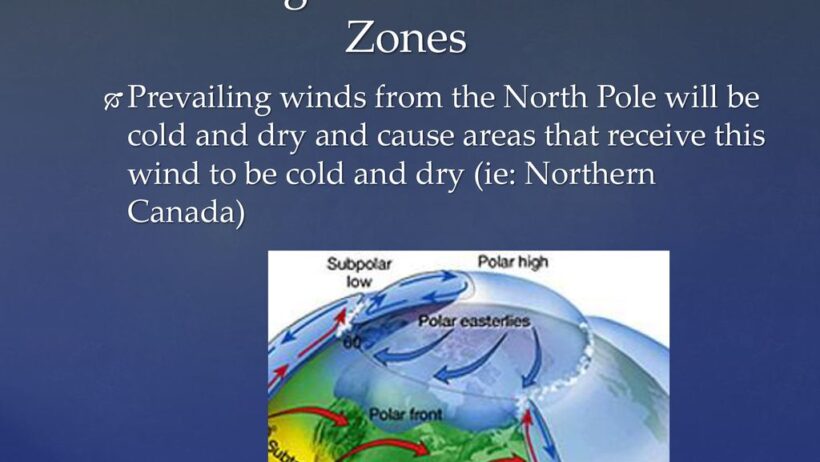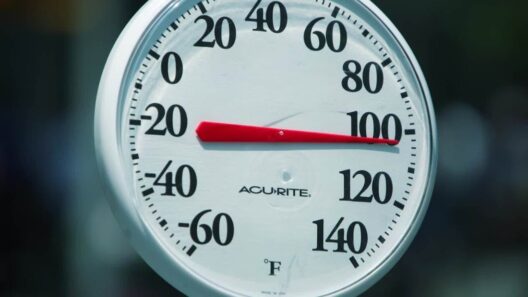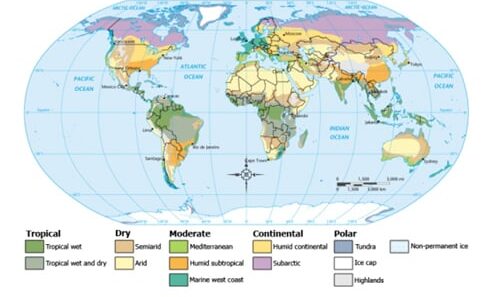Prevailing winds are a fundamental aspect of Earth’s atmospheric dynamics, and they undoubtedly wield the power to shape climate zones. These winds arise from the uneven heating of the Earth’s surface by the sun, which creates pressure differences that drive air movement. They not only influence weather patterns but also play a crucial role in determining the climatic conditions of various geographical regions. Understanding how prevailing winds function provides insight into the delicate balance of our planet’s climate system.
To comprehend the impact of prevailing winds on climate zones, it is crucial first to explore their origin. The sun’s energy heats the equatorial region more intensely than the polar regions. This temperature gradient creates a disparity in air pressure, resulting in the movement of air from high-pressure areas to low-pressure ones. However, due to the Coriolis effect, which results from the Earth’s rotation, winds do not travel in a straight line but instead curve. In the Northern Hemisphere, winds veer to the right, while in the Southern Hemisphere, they shift to the left. This phenomenon results in distinct wind patterns that can be classified into several prevailing wind belts, each with its unique characteristics and climatic influence.
Among the most significant wind patterns are the trade winds, westerlies, and polar easterlies. The trade winds blow from the east towards the west between the tropics of Cancer and Capricorn, creating a system that facilitates oceanic currents and influences tropical climates. These winds are integral in driving the warm waters of the equatorial oceans and are responsible for generating the humid conditions characteristic of tropical rainforests. As the trade winds converge, they lead to the formation of the Intertropical Convergence Zone (ITCZ), a region of low pressure that fosters significant precipitation and vegetation diversity. Thus, the trade winds not only shape local climates but also direct the atmospheric circulation that sustains diverse ecosystems in the tropics.
Contrarily, the westerlies, which are found in the mid-latitudes, exhibit a different climatic influence. These winds, blowing from west to east, are responsible for the temperate climate zones, which are characterized by moderate weather patterns and seasonal changes. The westerlies facilitate the transition of air masses, leading to variable weather as warm, moist air from oceanic regions meets the cooler land air. This interaction generates the frontal systems that produce much of the precipitation in temperate regions, supporting agriculture and various forms of life. Thus, the interplay between the westerlies and local geographical features significantly contributes to the climatic diversity within these zones.
Moving closer to the poles, the polar easterlies contribute to the unique climatic conditions seen in polar regions. These winds blow from the east and are characterized by cold, dry air. The polar easterlies influence the formation of ice sheets and tundra ecosystems, promoting a climate that experiences extreme lows in temperature and very limited vegetation. The chilling effect of these winds leads to the creation of polar deserts, demonstrating how prevailing winds can curtail biodiversity and foster distinct environmental conditions.
Moreover, it is not solely the direction and strength of these winds that dictate climate but also their interaction with ocean currents. The ocean, in concert with the atmosphere, forms an intricate system of thermoregulation. For instance, the Gulf Stream, propelled partly by the trade winds, transports warm water from the Gulf of Mexico to the North Atlantic, thereby moderating the climate of Western Europe. Conversely, cold ocean currents, often aided by the polar easterlies, can create arid conditions along coastlines, as observed in regions like the Atacama Desert in Chile, where the Humboldt Current plays a pivotal role.
Climate zones, therefore, are shaped by regulating factors that extend beyond the immediate physical landscape. The altitude, proximity to oceans, and prevailing winds create a network of influences that interact to define a region’s climate. This complex interplay is why understanding prevailing winds is quintessential for predicting climatic changes and adapting to them. As climate change continues to alter wind patterns and their interactions with ocean currents, regions that have historically enjoyed stable climates may experience shifts that substantially affect agriculture, ecosystems, and human habitation.
In addressing the broader implications, it is essential to consider the anthropogenic impact on these natural systems. The rise in greenhouse gas emissions has led to alterations in temperature gradients, which can, in turn, modify prevailing wind patterns. Such changes may exacerbate extreme weather events, further influencing local climates and leading to challenges like droughts or flooding. As communities strive to mitigate these impacts, recognizing the role of prevailing winds in shaping climate zones underscores the urgent need for sustainable practices. Preserving the delicate balance of these atmospheric phenomena is not merely an environmental concern; it is a matter of global survival.
In conclusion, prevailing winds are pivotal in shaping the climate zones of our planet. From the humid tropics driven by the trade winds to the frigid polar regions controlled by polar easterlies, these winds are more than mere meteorological phenomena. They are decisive factors in determining the distribution of life, the agricultural viability of regions, and the overall climate of the Earth. As climatic conditions evolve, acknowledging the complex dynamics of prevailing winds becomes increasingly critical in our efforts to understand and respond to the challenges posed by global climate change.







